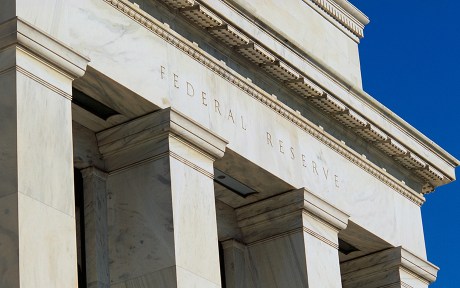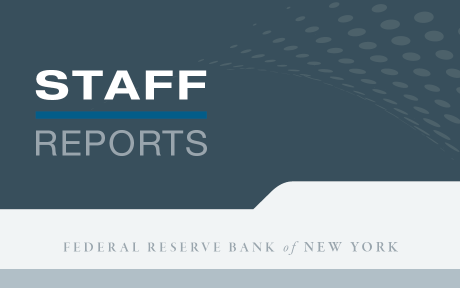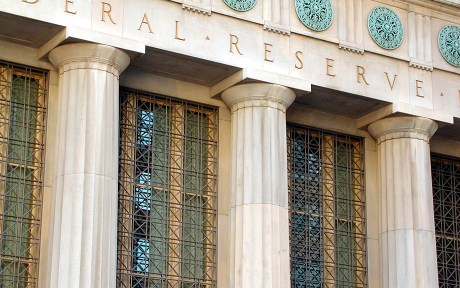
The rapidity of deposit outflows during the March 2023 banking run highlights the important role that the Federal Reserve’s discount window should play in strengthening financial stability. A lack of borrowing, however, has plagued the discount window for decades, likely due to banks’ concerns about stigma—that is, their unwillingness to borrow at the discount window because it may be viewed as a sign of financial weakness in the eyes of regulators and market participants. The discount window has been reformed several times to alleviate this problem. Although the presence of stigma during the great financial crisis has been documented empirically, we do not know whether stigma has remained since then. In this post, based on a recent Staff Report, we fill this gap by using transaction-level data from the federal funds market to examine whether the discount window remains stigmatized today.
Stigma and Realized Stigma
Empirically, stigma may be identified by the presence of a spread over the discount window primary credit rate that a bank is willing to pay to avoid borrowing at the window. However, a bank’s willingness to pay is not observable. Instead, we observe “realized stigma:” how much more a bank actually pays above the primary credit rate to borrow. Realized stigma and stigma are not equivalent. Realized stigma provides a lower bound on the extent of stigma. In particular, even if a bank does not actually pay a premium (for instance, because it borrows on the interbank market below the primary credit rate, thus implying no realized stigma), it may have been willing to do so ex-ante.
Evidence of realized stigma, nevertheless, is informative: it signifies that stigma is indeed present. In our paper, we follow the economic literature and measure realized stigma by looking at transactions in the federal funds market, the over-the-counter overnight U.S. interbank market for funds held by banks at the Fed; we interpret a bank purchasing federal funds above the primary credit rate as evidence of stigma.
Realized Stigma since 2014
The chart below plots the proportion of federal funds volume purchased above the primary credit rate between 2014 and July 2024. We find little evidence of stigma before the COVID-19 pandemic, with less than 0.1 percent of federal funds transactions purchased above the primary credit rate.
Evidence of Discount Window Stigma
Percent
Notes: This chart shows the proportion of federal funds volume purchased by domestic banks above the discount window rate daily between April 1, 2014 and July 1, 2024. A positive value can be interpreted as evidence of discount window stigma. The start of the last three major financial disruptions (the September 2019 repo market disruption, the onset of the COVID-19 pandemic, and the March 2023 banking turmoil) are indicated by dashed vertical lines.
The onset of the pandemic saw a sharp increase in realized stigma. Between March 11 and March 31, 2020, 28 percent of federal funds borrowing occurred above the primary credit rate, with every type of bank showing evidence of realized stigma.
Evidence of stigma faded in the months that followed the pandemic but resurfaced several months before the 2023 banking turmoil. Between July 2022 and March 2023, an increasing share of federal funds (15 percent, on average) was purchased by domestic banks above the primary credit rate. Surprisingly, realized stigma did not surge after the failure of Silicon Valley Bank (SVB) on March 9, 2023. In fact, the post-pandemic peak in realized stigma happened in December 2022. Nevertheless, the average size of the stigma spread (the spread paid over the discount window rate) more than doubled, from 10 basis points (bps) in the pre-banking turmoil period to 22 bps in the weeks that followed the failure of SVB.
Note that realized stigma is common in troubled banks. Banks that showed signs of stigma between 2014 and 2024 were three times more likely to have failed over the same period. Moreover, out of the twenty-two banks that suffered a run during the 2023 banking turmoil, nine had experienced realized stigma in the preceding ninety-day period.
We also find that realized stigma is not due to a lack of prepositioned collateral at the discount window; that is, it is not due to banks’ lack of operational readiness. In particular, a bank that purchased federal funds above the discount window rate during the 2023 banking turmoil could have obtained almost 80 percent of those funds (on average) from the discount window, based on the amount of collateral it had prepositioned at the discount window.
The Determinants of Realized Stigma
To better understand the determinants of realized stigma, we conduct a statistical analysis. The results reveal a highly statistically and economically significant persistence in realized stigma: banks that borrow federal funds above the discount window rate are about 40 percent more likely to do so again the following month. Consistent with stigma, banks that do not visit the discount window are significantly more likely to show subsequent realized stigma.
Moreover, a bank is significantly more likely to display realized stigma after increasing in size, becoming financially weaker (that is, having a lower ratio of U.S. Treasury securities or a higher ratio of held-to-maturity losses), or when its share of alternative funding sources declines (lower Federal Home Loan Bank borrowing). Looking at the post-June 2022 period, when stigma became prevalent, some of these determinants changed; in particular, banks with lower cash holdings and higher uninsured deposit liabilities became more likely to exhibit realized stigma.
Concluding Remarks
In this post, we present evidence of discount window stigma in the years since the global financial crisis using transaction-level data from the federal funds market. Evidence of realized stigma is particularly strong around periods of financial market turmoil, such as during the COVID-19 pandemic and the March 2023 banking turmoil. Our results suggest that discount window stigma is still an issue, potentially limiting the discount window’s ability to ameliorate financial stability in times of turmoil.
Olivier Armantier is a professor at the Economic Science Institute, Chapman University.

Marco Cipriani is head of Money and Payments Studies in the Federal Reserve Bank of New York’s Research and Statistics Group.

Asani Sarkar is a financial research advisor in Non-Bank Financial Institution Studies in the Federal Reserve Bank of New York’s Research and Statistics Group.
How to cite this post:
Olivier Armantier, Marco Cipriani, and Asani Sarkar, “Discount Window Stigma After the Global Financial Crisis,” Federal Reserve Bank of New York Liberty Street Economics, January 17, 2025, https://libertystreeteconomics.newyorkfed.org/2025/01/discount-window-stigma-after-the-global-financial-crisis/
BibTeX: View |
Disclaimer
The views expressed in this post are those of the author(s) and do not necessarily reflect the position of the Federal Reserve Bank of New York or the Federal Reserve System. Any errors or omissions are the responsibility of the author(s).













 RSS Feed
RSS Feed Follow Liberty Street Economics
Follow Liberty Street Economics